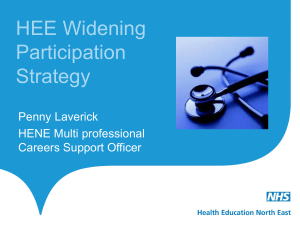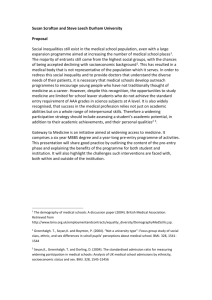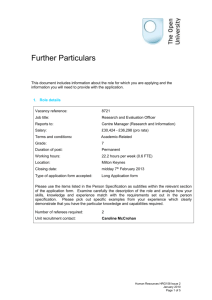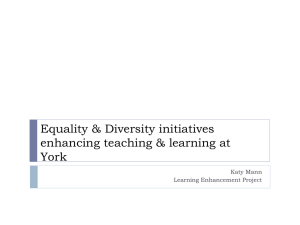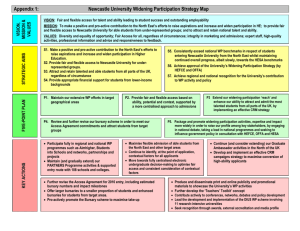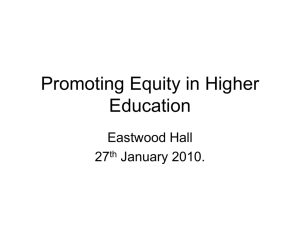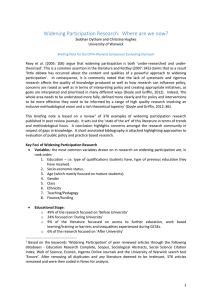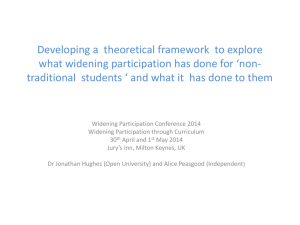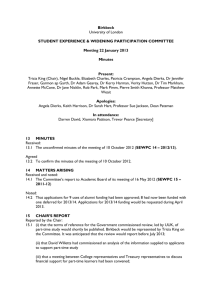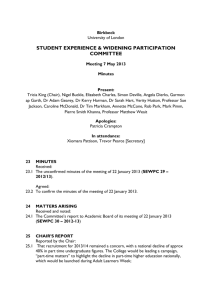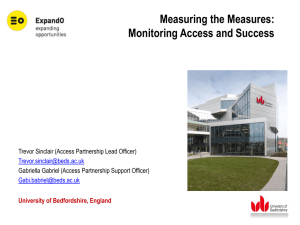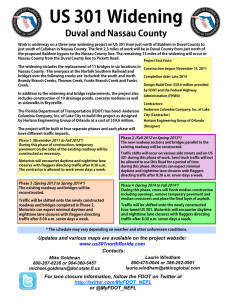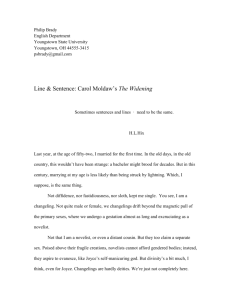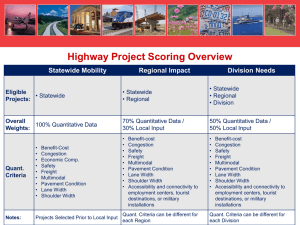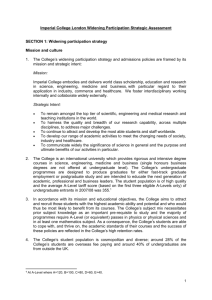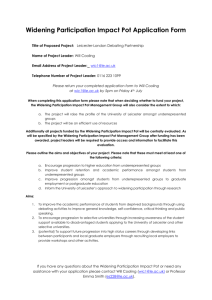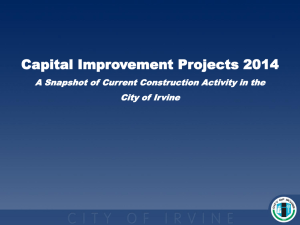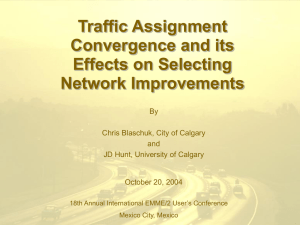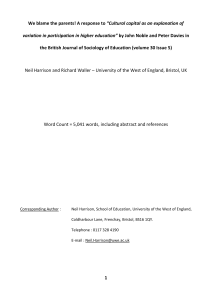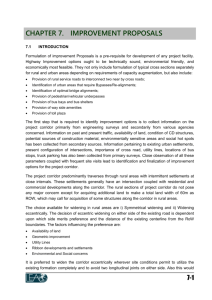Contextualised approaches to widening participation
advertisement
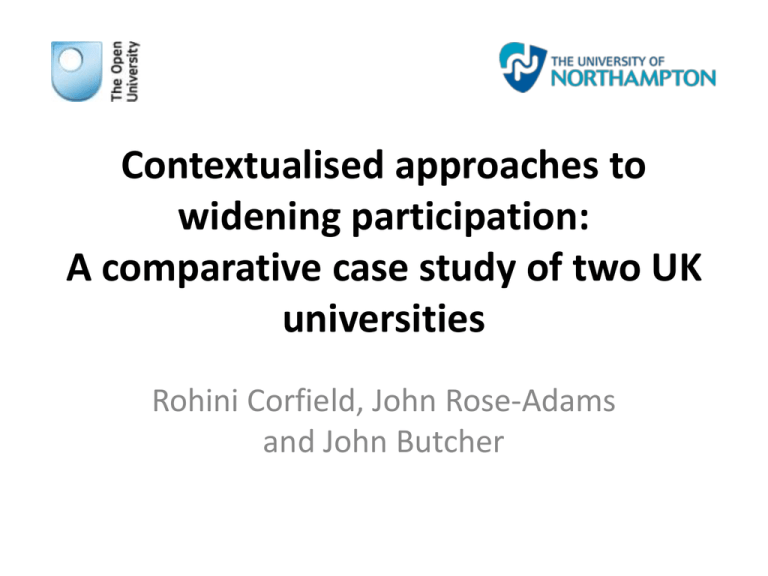
Contextualised approaches to widening participation: A comparative case study of two UK universities Rohini Corfield, John Rose-Adams and John Butcher Overall Research Project At a time of unprecedented uncertainty in the UK HE sector, we sought to understand how two contrasting universities were engaging strategically with widening participation. Questions areas Understanding definitions Critical success factors Learner diversity Measuring impact and value for money Institutional frameworks @Senior Leadership Institutional barriers Future of outreach activity UK context: ‘Golden age’ of WP over? New targeted funding streams (outreach and retention) Devolved governments – divergent approaches 50% participation target (in England) 80% cut in teaching grant Coalition government 2010 New Labour government 1997 Generous resources in pursuit of a national strategy - expansion of HE student numbers accelerating shift from public to private funding via trebling of student fees termination of funding for access and outreach networks Concepts and terms associated with ‘widening participation’ Inclusion? Diversity? Social Justice? Widening Participation Enhancement ? Equality? Equity? Gained degree awarding powers 1970 Only UK university dedicated to distance learning 150,000 undergraduates & 30,000 postgraduates (70% in f/t employment, 20% study from outside UK, 10% BME, 7% with a disability) E-learning central to course delivery New VC with significant international business leadership Open access policy: mission to promote social justice University of Northampton The Open University The Institutions Gained degree awarding powers 2006 Strong recognition ‘transforming lives’ in mission Ranked first for ‘added value’ 14,000 FTE students (42% mature, 28% p/t, 25% BME, 5% international, 7% with a disability) 6 Academic Schools 4 Strategic Partner colleges New VC, new strategic business plan, new metrics, new social enterprise USP Literature Limited literature addressing institutional responses to WP: • Thomas et al (2010) ‘WP implementation may not be the same as institutions say in their strategies’ • Action on Access (2009) ‘for some institutions, WP is intimately connected to their mission in terms of recruiting sufficient student numbers...’ • Greenbank (2006) ‘WP policy ‘migrates’ from government to institutional policy ...differences in organisational culture mean different policy responses emerge’ • Stevenson et al (2010) ‘WP an unstable amalgam of economic rationality & social justice: personal values dominate’ • Graham (2010) !!! Methodology • Comparative case study • Senior Stakeholder interviews • Same semi-structured question areas used across both settings • Stakeholders saw question areas in advance • Northampton: VC, PVC, all 6 Deans = 8 • OU: Nation Directors, Heads and Directors of Units, including E&D, student services, WP, government relations =9 • 45 minutes, digitally recorded, researcher transcribed • Analysis of key themes, shared categories of interpretation Findings 1 – Shifting discourse, confusion and clarity University of Northampton • “WA is about recruitment and promotion... WP is what we do with the students when they are here. We can make a difference through course design, progression, study skills etc. We need to be careful that support is available to all students – tutors cannot tell the backgrounds of their students so it is wrong to assume that specific groups can be targeted.” • “I’m probably a bit vague on that....they probably seem the same thing to some people and different things to different people” • “I still think people don’t know what WP is…” Findings 1 – Shifting discourse, confusion and clarity Open University clarity? • “They are part of the same thing for me. I think the days are long gone when we just thought getting people into an institution equalled widening participation of access and actually student success has got to be an integral part of it” • “...we have a responsibility to those students who we have encouraged to access this institution to be successful as they can be and therefore the strategy is not about maximising the number....it is actually about the success of those students, probably in equal measure” But conflict at Nations level, and concerns of following funding streams. Findings 2 - WP as a discredited discourse • “If I am honest the WP branding is a problem. We need to be aspirational, and WP doesn’t help with that...” (UN) • “I do find the language a bit tired now. I know we use WP as slang...it smacks of a very noughties/late nineties... my feeling is that there are huge changes around the sector around what WP means...if it survives as a word...” (UN) • “I think WP has too much baggage associated with it now as a phrase”. (UN) • “Maybe we ought not have a WP strategy and maybe we ought to have a strategy around inclusion and then people might start to do a little more work around this area.” (OU) Findings 3 - Measuring impact: Societal level • “The real impact is seeing whether what we are doing is a making a difference to society. The raison d’etre for us being here is to have an impact on society – in terms of employability it would be good to say that the University’s alumni are creating knowledge, affecting the economy, especially if we have this data for WP students. We know we are widening access and participation – are these students having an impact?” (UN) Findings 3 - Measuring impact: Institutional level • “Four key measures – recruitment, retention, progression and achievement which we have control over…We get ourselves tied up trying to measure things we can’t.” (UN) • “[T]he students’ view of the impact for them is key but it is very, very qualitative so we are never going to be looking at that at the [senior management meetings], but somebody does need to see our evaluations of interventions, that kind of thinking needs to be happening and obviously that information fed up” (OU) • “[L]ook at the broad picture and then drill down where we think is necessary.” (OU) Findings 3 - Measuring impact: individual level • “Who’s actually measuring us? Students are paying.” (UN) • “We haven’t systematically singled WP students out to kind of monitor their progress through the stages of their learning journey on a module or qualification route…I’d like us to move to a position where we understand the WP student journey.” (OU) • “We’re only going to make so much progress while we’re looking at groups, we need to look at the level of the individual....needs an individual tracking agenda.....students need to complete well, not just be retained.” (UN) Findings 4 - Institutional leadership of WP and the role of the Faculty • UN senior leadership of WP at Faculty level: 6 Deans. (Disciplinary focus, curriculum level activity clear) • OU senior leadership of WP outside Faculty structure* (Support focus, generic approaches, systematic?) Conclusions 1. Senior staff ideological commitment necessary but not sufficient – staff diversity an issue, institutional mission critical, and translation to practice – “a bloody nightmare”. 2. Impact, evidence and evaluation – more, more, more. Changed locus of impact measurement – shift from public accountability to private Value for Money 3. If, as Stevenson et al (2010) suggest, widening participation is a ‘confusion of tongues’...then no reason why not to select a new terminology: If it is broke, do fix it. Discussion prompts • In your experience, has WP as a term become discredited? • Where should WP be located in a HEI for maximum impact? • What quantitative and qualitative measures of student success do you currently use? • Has stakeholder interview methodology yielded insightful data? Contact details John Butcher, john.butcher@northampton.ac.uk Rohini Corfield, rohini.corfield@northampton.ac.uk John Rose-Adams, j.rose-adams@open.ac.uk References • • • • • Action on Access (2009) Report to the Higher Education Funding Council for England: Mainstreaming and Sustaining Widening Participation in Institutions, Final report, September 2009, available from http://www.actiononaccess.org/index.php?p=11_2_3 (accessed 27 May 2011) Greenbank, P (2006) Widening participation higher education: researching institutional responses, Widening Participation and Lifelong Learning, 8(3), 47-51 Jones, R. (2008) New to widening participation? An overview of research. Available at: http://www.heacademy.ac.uk/resources/detail/ourwork/inclusion/wprs/WPRS_Ne w_to_WP_complete_synthesis [Accessed May 6, 2011]. Stevenson, J., Clegg, S. & Lefever, R., (2010) The discourse of widening participation and its critics: an institutional case study. London Review of Education, 8(2), p.105. Available at: http://www.informaworld.com.libezproxy.open.ac.uk/10.1080/14748460.2010.48 7328 [Accessed March 22, 2011]. Thomas, L, Storan, J, Wylie, V, Berzins, K, Harley, P, Linley, R, Rawson (2009) A Review of Widening Participation Strategic Assessments 2009, available at http://www.actiononaccess.org/resources/files/resources__Review%20of%20WPS As%20%282009%29%20-%20November%202010.pdf (accessed 17 June 2011)
